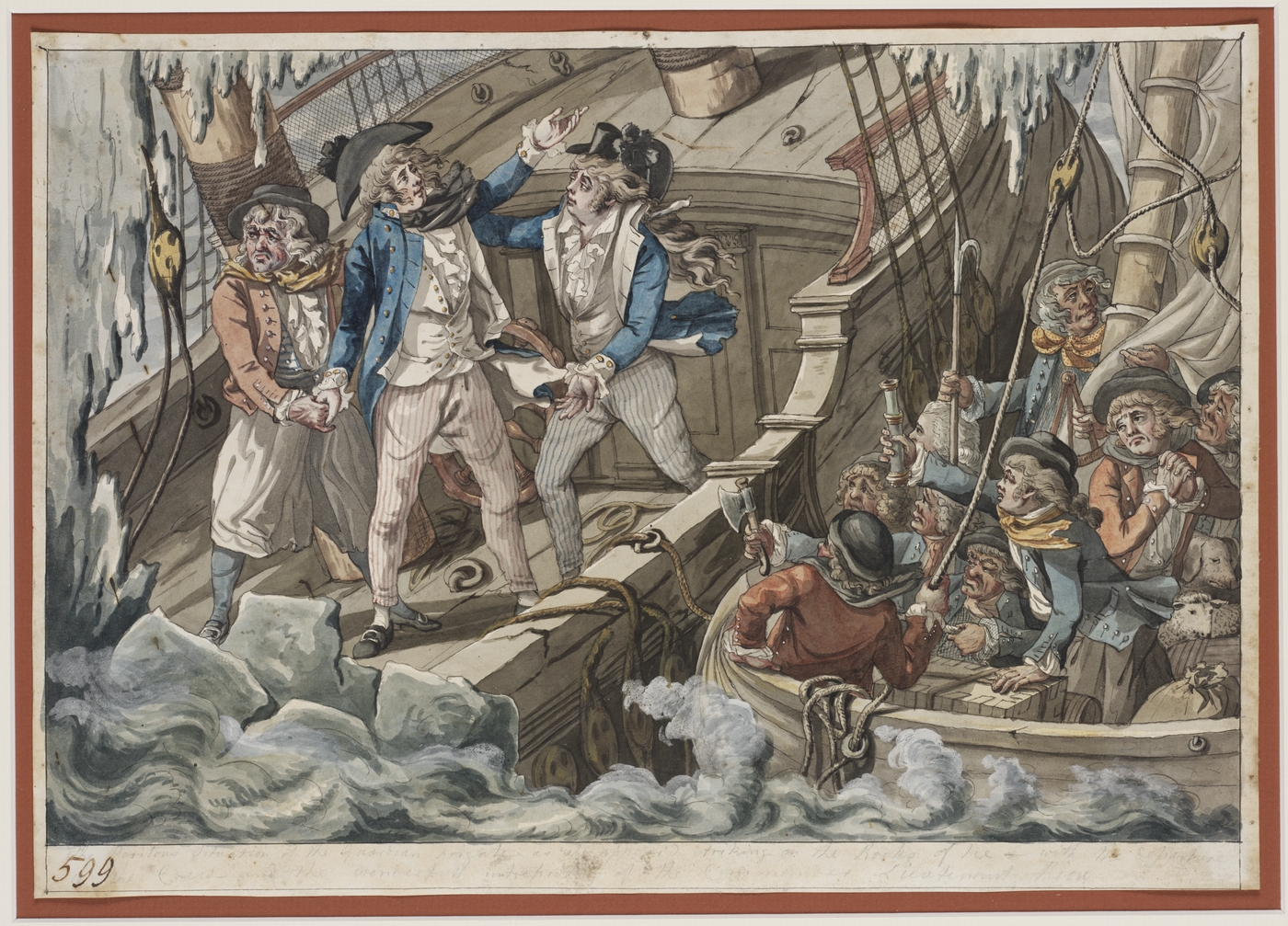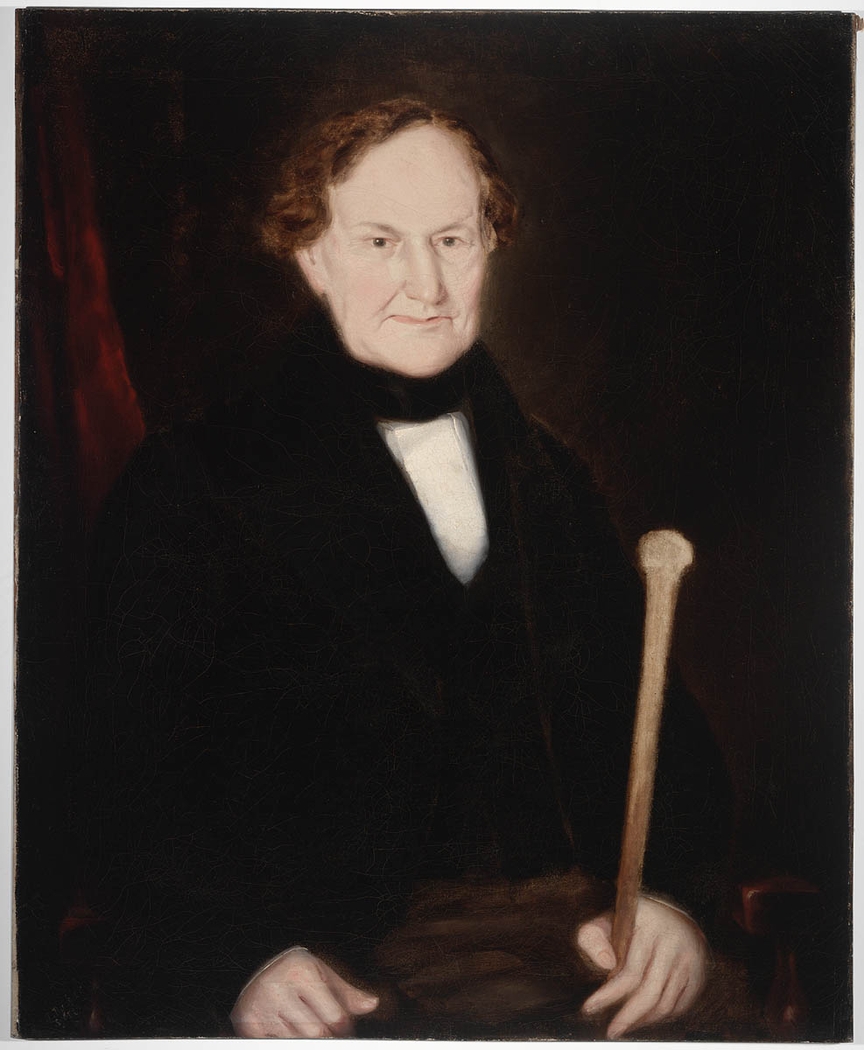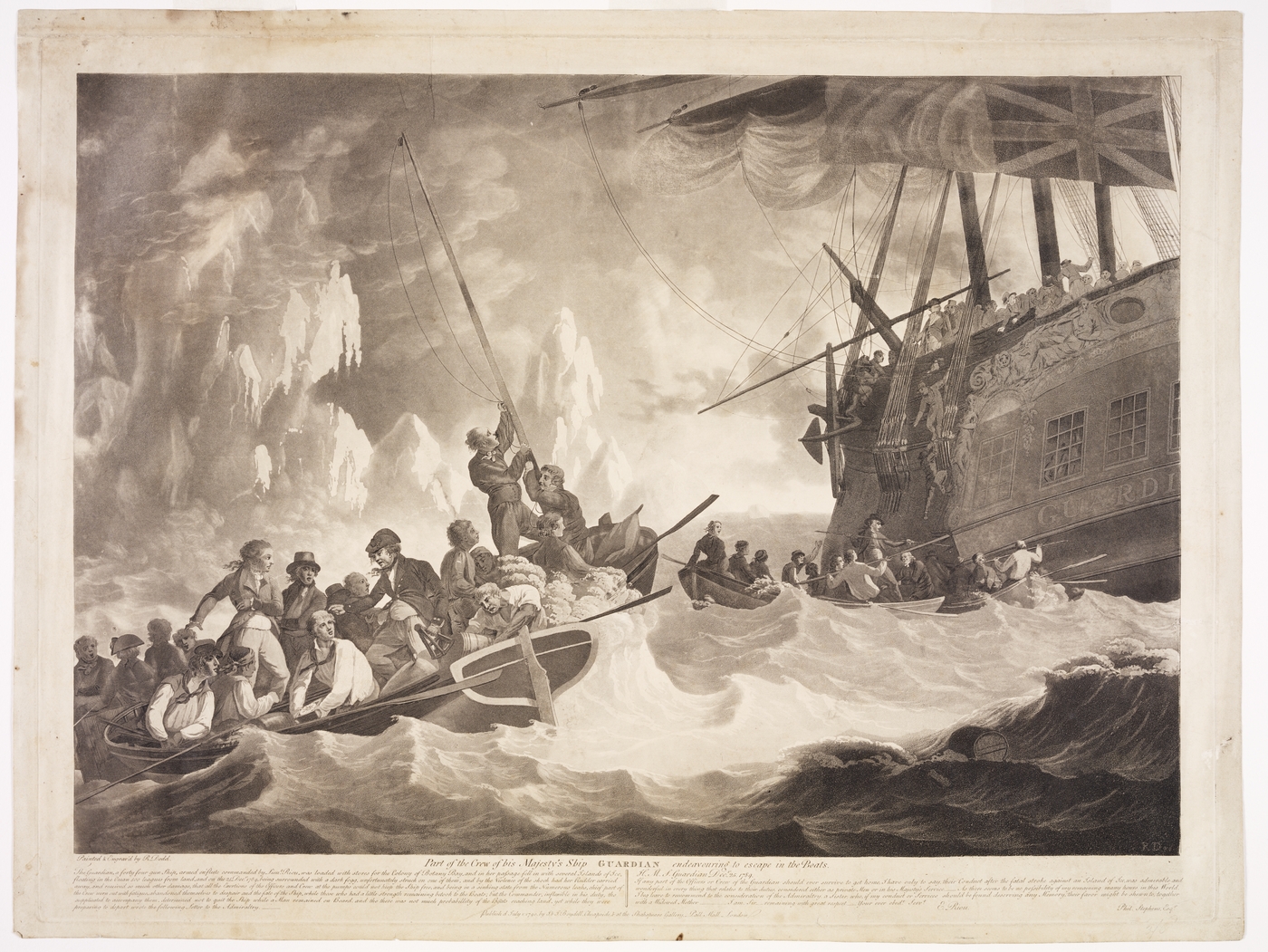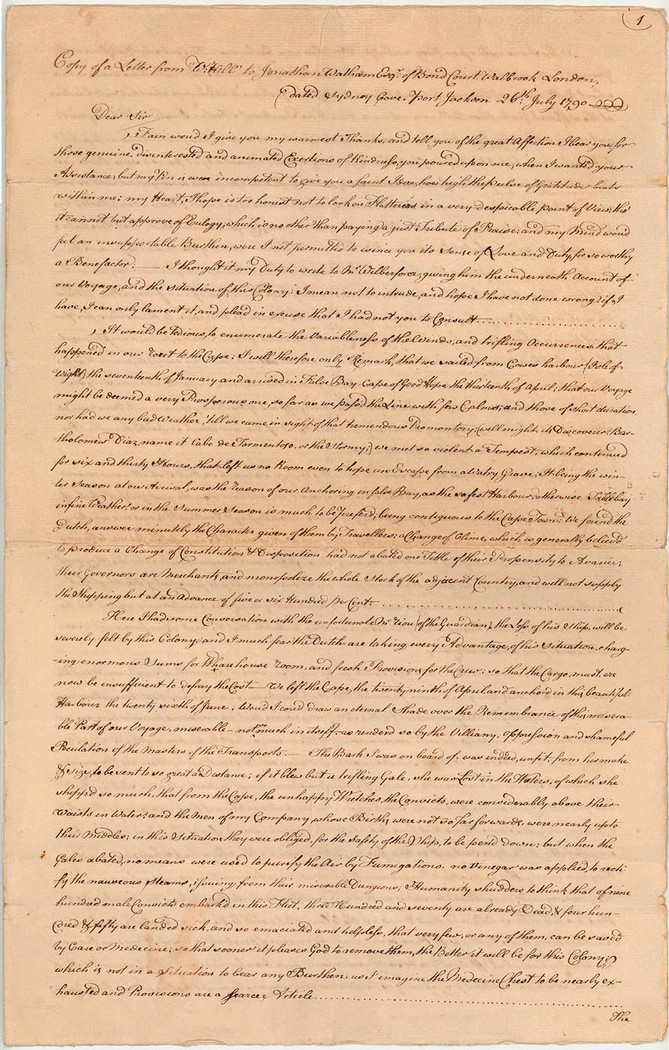The Dictionary of Sydney was archived in 2021.
HMS Guardian
Citation
Persistent URL for this entry
To cite this entry in text
To cite this entry in a Wikipedia footnote citation
To cite this entry as a Wikipedia External link
HMS Guardian
[media]The Second Fleet storeship HMS Guardian was a fifth-rate [1] frigate of 879 tons, measuring 140 feet (42.6 metres). The vessel had the dubious distinction of being the first ship carrying convicts to be wrecked en route to Australia. [2]
While the first of the Second Fleet transports, Lady Juliana, was embarking her cargo of female convicts on the Thames in April 1789, preparations were made to equip the naval warship HMS Guardian to carry desperately needed stores to the infant settlement in New South Wales. This came in response to correspondence from Governor Phillip who stressed a critical lack of provisions and skilled convicts at Sydney Cove.
Originally designed as a 44-gun frigate, HMS Guardian was built at Limehouse by Robert Batson in 1784. [3] Completed too late to take part in the American War of Independence, the vessel sat in reserve at Woolwich until April 1789 when it was refitted and had its lower tier of guns removed in order to make room for cargo. [4]
[media]Twenty-six-year-old Lieutenant Edward Riou was appointed to take command of HMS Guardian on 21 April 1789. Riou was a well-respected officer who had served as midshipman on Discovery during Cook's final voyage. He later served under Nelson at the battle of Copenhagen, where he met his death. [5]
While at Woolwich, Guardian took on 1003 tons of cargo, including salted meat, flour, livestock, medical supplies and clothing, which amounted to two years' provisions for the settlement in New South Wales. [media]When the ship left English waters on 14 September 1789, there were 88 crew members and 36 passengers on board. [6] Among these were Reverend John Crowther, who was to take up duties as a chaplain in Sydney, 25 specially selected convict artificers and farmers [7] and superintendent of convicts Andrew Hamilton Hume. Hume later held numerous positions of influence in the colony and his son, Hamilton Hume, was an accomplished explorer.
After a brief call at Tenerife, [media]the ship reached Table Bay, Cape of Good Hope, on 24 November 1789. [8]
During the ship's stay at the Cape, more provisions were taken on board, along with plants to complete a garden that had been prepared under the direction of Sir Joseph Banks. [9] The ship set sail for New South Wales on 11 December and 13 days out from the Cape, Riou sent two boats to gather ice from an iceberg to add to the ship's water supplies. [10] Navigating hazardously through the heavy fog, the ship struck an 'island of ice' [11] and was badly damaged.
When the noise reached the cabin, and gave the final signal of danger: Lieutenant Riou ran directly upon deck, where all was a scene of horror and danger. The fore-part of the ship seemed already shut in under the mountain of ice…[12]
A desperate struggle to [media]keep the ship afloat ensued, in which Riou ordered heavy objects, including livestock and cargo, to be thrown overboard. After two days Riou consented to the requests of those passengers and crew who wished to abandon the stricken ship, allowing them to take five boats and some provisions to try their luck at sea. [13] Around half of those on board opted to leave, including the Reverend Crowther. After nine days sailing, Crowther's boat was picked up by the French merchant ship Viscountess of Brittany. [14] The others, however, were never seen again.
Riou declared his resolve to remain onboard and along with 61 others, including 21 convicts, [15] remarkably kept the ship afloat for nine weeks. The injured vessel was steered back to the Cape of Good Hope, arriving on 21 February 1790.
The damage to Guardian was extensive. A large hole had been torn through the ship's bows, and the iron and shingle ballast washed out. The remains of the cargo were salvaged, some of which was eventually conveyed to the colony, and the wreck of the Guardian was stripped and abandoned. [16]
[media]The loss was a blow to prospects of the struggling New South Wales settlement, which had been counting on Guardian's delivery of much-needed food and equipment. Had Guardian arrived as predicted in March 1790, it would have relieved the severe food shortages and perhaps prevented the loss of HMS Sirius, which was wrecked soon after while delivering provisions to Norfolk Island. [17]
In the later months of 1790, HMS Sphinx collected Riou and the remains of the crew from the Cape. [18] The story of the Guardian's ordeal captured the public's imagination and Riou was hailed a hero for his efforts and unfaltering leadership throughout the ordeal. Riou praised his crew and through his recommendations, 14 of the surviving convicts received pardons upon their arrival in Australia. [19] Many of these Guardian convicts prospered in the colony, including Richard Cheers who built and managed the Black Bull Inn and established a successful butchery on land grants around George Street in Sydney, and also had farms in Ryde and Manly.
Further reading
Collins, David. An Account of the English Colony in New South Wales; With Remarks on the Dispositions, Customs, Manners &c. of the Native Inhabitants of that Country, volume III, 1798. Edited by H Fletcher. Sydney: AH & AW Reed in association with the Royal Australian Historical Society, 1975.
Riou, Edward and Mr Clements. Guardian: a journal of the proceedings on board the above ship, Lieutenant Riou, Commander; as delivered into the Admiralty Board by Mr Clements. London: Printed for Charles Stalker, 1790.
Riou, Edward. Melancholy Disaster of His Majesty's Ship The Guardian, Bound to Botany Bay with Stores and Convicts, Lieut. Riou, Commander, &c.,. London: Printed for Thomas Tegg, 1880.
Riou, Edward. The Last Voyage of the Guardian, Lieutenant Riou, Commander 1789–1791. Edited with an introduction by MD Nash. Cape Town: Van Riebeeck Society, 1990.
Flynn, Michael. The Second Fleet: Britain's Grim Convict Armada of 1790. Sydney: Library of Australian History, 2001.
Notes
[1] Technical term relating to a rating system used by the British Royal Navy
[2] Charles Bateson, The Convict Ships, 1787–1868 (Glasgow: Brown, Son & Ferguson, 1969), 124
[3] JJ Colledge Ships of the Royal Navy: Major ships (London: Chatham 1969), 246
[4] Edward Riou, The Last Voyage of the Guardian, Lieutenant Riou, Commander 1789–1791 edited with an introduction by MD Nash (Cape Town: Van Riebeeck Society, 1990), xxi
[5] Edward Riou, The Last Voyage of the Guardian, Lieutenant Riou, Commander 1789–1791 edited with an introduction by MD Nash (Cape Town: Van Riebeeck Society, 1990), xxii
[6] Michael Flynn, The Second Fleet: Britain's Grim Convict Armada of 1790 (Sydney: Library of Australian History, 2001), 24
[7] David Collins, An Account of the English Colony in New South Wales; With Remarks on the Dispositions, Customs, Manners &c. of the Native Inhabitants of that Country, volume III, 1798, edited by H Fletcher (Sydney: AH & AW Reed in association with the Royal Australian Historical Society, 1975), 126
[8] Michael Flynn, The Second Fleet: Britain's Grim Convict Armada of 1790 (Sydney: Library of Australian History, 2001), 25
[9] David Collins, An Account of the English Colony in New South Wales; With Remarks on the Dispositions, Customs, Manners &c. of the Native Inhabitants of that Country, volume III, 1798, edited by H Fletcher (Sydney: AH & AW Reed in association with the Royal Australian Historical Society, 1975), 125
[10] Edward Riou and Mr Clements, Guardian: a journal of the proceedings on board the above ship, Lieutenant Riou, Commander; as delivered into the Admiralty Board by Mr Clements (London: Printed for Charles Stalker, 1790), 7
[11] Letter to the Admiralty from Riou dated 22 February, Table Bay, 1790, Guardian: a journal of the proceedings on board the above ship, Lieutenant Riou, Commander; as delivered into the Admiralty Board by Mr Clements (London: Printed for Charles Stalker, 1790), 41
[12] Edward Riou and Mr Clements, Guardian: a journal of the proceedings on board the above ship, Lieutenant Riou, Commander; as delivered into the Admiralty Board by Mr Clements (London: Printed for Charles Stalker, 1790), 9
[13] David Collins, An Account of the English Colony in New South Wales; With Remarks on the Dispositions, Customs, Manners &c. of the Native Inhabitants of that Country, volume III, 1798, edited by H Fletcher (Sydney: AH & AW Reed in association with the Royal Australian Historical Society, 1975), 126
[14] Edward Riou, Melancholy Disaster of His Majesty's Ship The Guardian, Bound to Botany Bay with Stores and Convicts, Lieut. Riou, Commander, &c., (London: Printed for Thomas Tegg, 1880), 18
[15] Edward Riou, Melancholy Disaster of His Majesty's Ship The Guardian, Bound to Botany Bay with Stores and Convicts, Lieut. Riou, Commander, &c., (London: Printed for Thomas Tegg, 1880), 19
[16] Edward Riou, Melancholy Disaster of His Majesty's Ship The Guardian, Bound to Botany Bay with Stores and Convicts, Lieut. Riou, Commander, &c., (London: Printed for Thomas Tegg, 1880), 19
[17] David Collins, An Account of the English Colony in New South Wales; With Remarks on the Dispositions, Customs, Manners &c. of the Native Inhabitants of that Country, volume III, 1798, edited by H Fletcher (Sydney: AH & AW Reed in association with the Royal Australian Historical Society, 1975), 124
[18] Edward Riou, Melancholy Disaster of His Majesty's Ship The Guardian, Bound to Botany Bay with Stores and Convicts, Lieut. Riou, Commander, &c., (London: Printed for Thomas Tegg, 1880), 19
[19] Edward Riou, The Last Voyage of the Guardian, Lieutenant Riou, Commander 1789–1791 edited with an introduction by MD Nash (Cape Town: Van Riebeeck Society, 1990), 204
.








